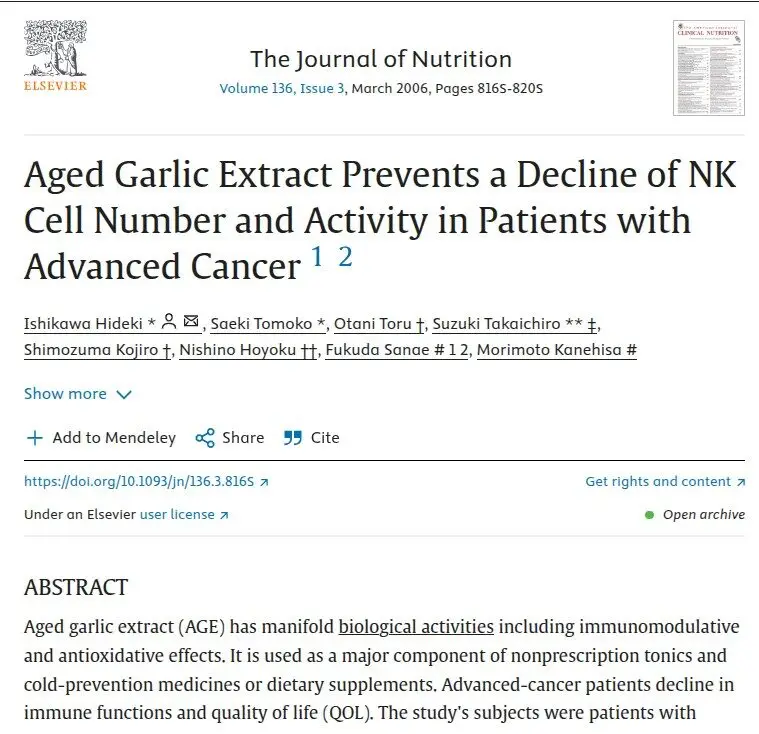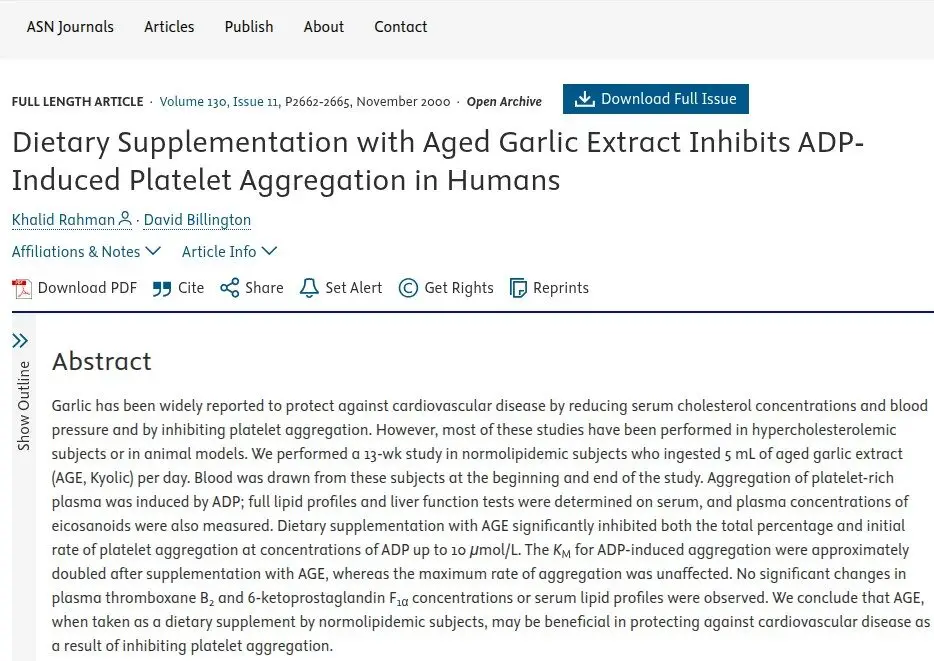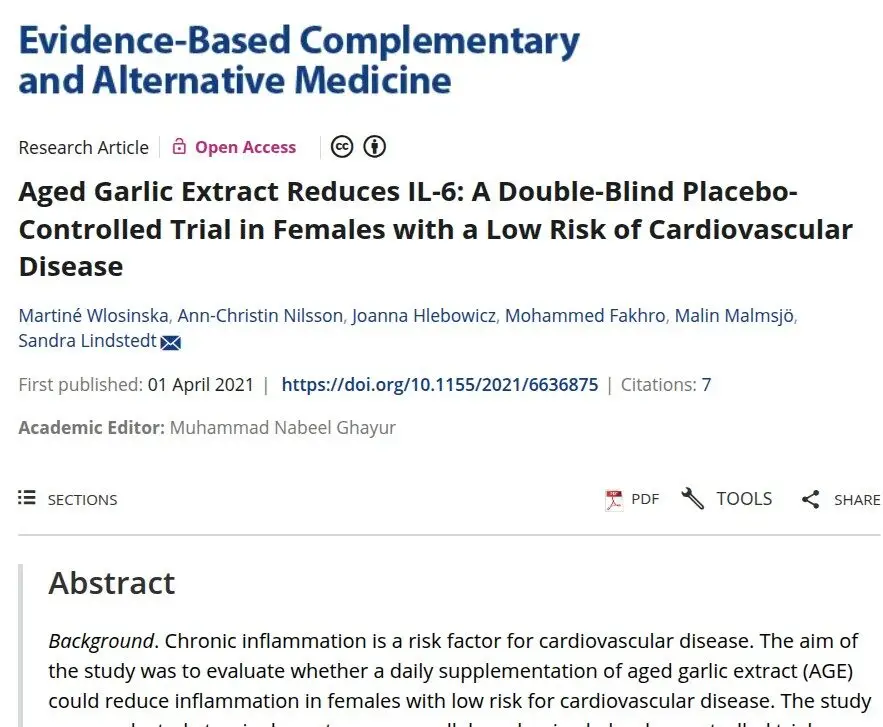There are few cancer clinical trials with garlic, though one study in advanced digestive system disease showed protective effects on NK (natural killer) T-cells of the immune system (Highlight 2). Where garlic has broad clinical evidence is in endothelial (blood vessel) health in other systemic inflammatory conditions, where it suppresses several common bio-markers strongly indicated in cancer growth and spread.
Aged black garlic is able to reduce endothelial adhesion molecules (MCP-1, ICAM-1, VCAM-1) crucial not only in heart disease but strongly implicated in metastasis. Even in healthy individuals, aged black garlic supplements measurably reduced the rates of blood platelet aggregation (see References) The fermentation process produces the actie compound S-allyl-cysteine indicated in lab studies to increase effects of garlic.
In studies with patients having some type of systemic inflammatory condition, garlic supplements show a moderate reduction in the c-reactive protein and IL-6 markers of inflammation, and an increase in IL-12 all of which indicate positive effects needed in metabolic health including cancer. Aged black garlic at 2.4g daily for 12 months showed strong reductions in key inflammatory markers IL-6 and c-reactive protein in otherwise healthy women ( Highlight 4). Similarly, aged black garlic has been shown to improve levels of adiponectin, a hormone important to healthy metabolism including glucose and insulin sensitivity. Low levels are associated to progression in several cancers including breast, prostate and kidney cancer.
Similarly, a clinical trial on chronic inflammation in obesity showed 400mg of garlic extract could also reduce Plasminogen Activator Inhibitor-1, a marker of blood coagulation or clotting levels. Upregulated levels of this protein are strongly linked to the spread of ovarian, colorectal, lung, bladder and most types of breast cancer.
Studies show sufficient levels of B12 can be linked to responses to garlic. In prevention, research shows mixed findings though some tendencies to protective effects in digestive cancers particularly colorectal. Clinical trials have used very diverse forms and doses of garlic, maybe the clearest protocol is from 2.4mg daily of aged black garlic extract sustained over time- look for high quality extracts such as Kyolic AGE or similar and can be a useful complement to garlic as a functional food.
Use both raw and cooked garlic. To help chopped garlic retain its active compounds during cooking, let it rest for ten minutes before heating.




